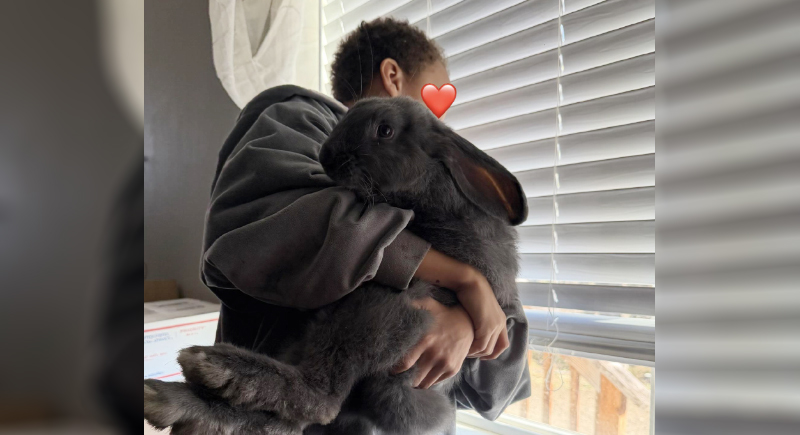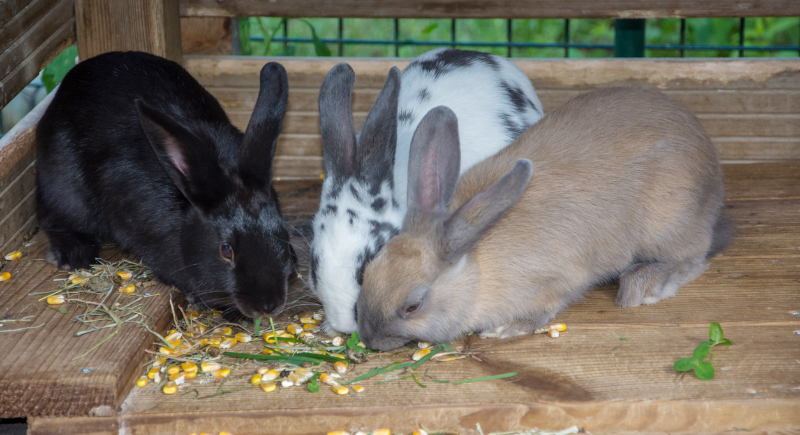This Person’s Pet Bunny Is Literally as Big as a Small Child, Showing How Big Rabbits Can Actually Get
Scrolling through social media, it’s hard not to stop when you see a photo of someone holding a rabbit that looks like it could borrow a kid’s backpack. In one viral picture, a person cradles a nig black bunny that could easily be mistaken for a small dog or even a toddler. This might appear like a camera trick, but that’s not the case. It is a real breed called the Flemish Giant, and it’s one of the largest rabbits in the world.
These rabbits can weigh between 15 and 22 pounds and stretch up to around 3 feet long when fully extended. To put that in perspective, that’s roughly the size of a cocker spaniel. Yet, despite their size, these rabbits are calm and affectionate animals that enjoy human company. Seeing one in someone’s arms might make you smile, but caring for such a big pet is no small task.
A Bunny Bigger Than History

Image via Reddit/SunflowersNsapphires
Giant rabbits aren’t new to Earth. About 2.5 million years ago, a rabbit called Nuralagus rex lived on the Mediterranean island of Menorca and weighed around 26 pounds, roughly ten times the weight of a typical bunny today. While that prehistoric giant is long gone, the Flemish Giant continues the legacy of massive rabbits. This breed traces its roots back to 16th-century Belgium, where it was first selectively bred for size.
Originally, these rabbits were raised for meat and fur, but they weren’t ideal for farming. Their low meat-to-bone ratio and high feeding costs made them impractical for production. By the late 1800s, their popularity spread across Europe and to the United States. The American Rabbit Breeders Association officially recognized the breed in 1910. Since then, they have become popular as companion animals admired for their calm, friendly nature.
The Life of a Living Pillow
A full-grown Flemish Giant lives around 8 to 10 years, and their easygoing attitude makes them good companions for families. Many can even be litter box trained, and they’re known to get along with other pets. Still, their size means they need plenty of room. Their enclosures should be at least 10 feet long and 3 feet wide, and they need daily time outside their cage for exercise and socialization.
Feeding them requires careful planning, because they consume their body weight in hay daily, supplemented with leafy greens and a small amount of fortified pellets. Their water intake is impressive, too; they can drink as much as a 25-pound dog daily. It’s a lot of care, but many owners say it’s worth it for the companionship these big rabbits provide.
Big Bunny, Bigger Responsibilities

Image via iStockphoto/Sebastien hovaguimian
Caring for a large rabbit like this means staying alert to their health needs. Their heavy bodies can lead to sore hocks if kept on hard or wire floors, and their long ears may develop infections without regular cleaning. Flemish Giants are also at risk for obesity, upper respiratory infections, and gastrointestinal stasis, a dangerous condition that can occur if they stop eating. Quick veterinary attention is critical in those cases.
Despite their size, Flemish Giants are sensitive animals. They can be easily stressed by loud noises or rough handling. They are also sensitive to heat and should be kept in cool environments with access to fresh water. These rabbits thrive when they have space to move and companionship from people or other pets.
Anyone lucky enough to share their home with a Flemish Giant knows that it’s not just a house pet but a big, fluffy member of the family with an even bigger personality.